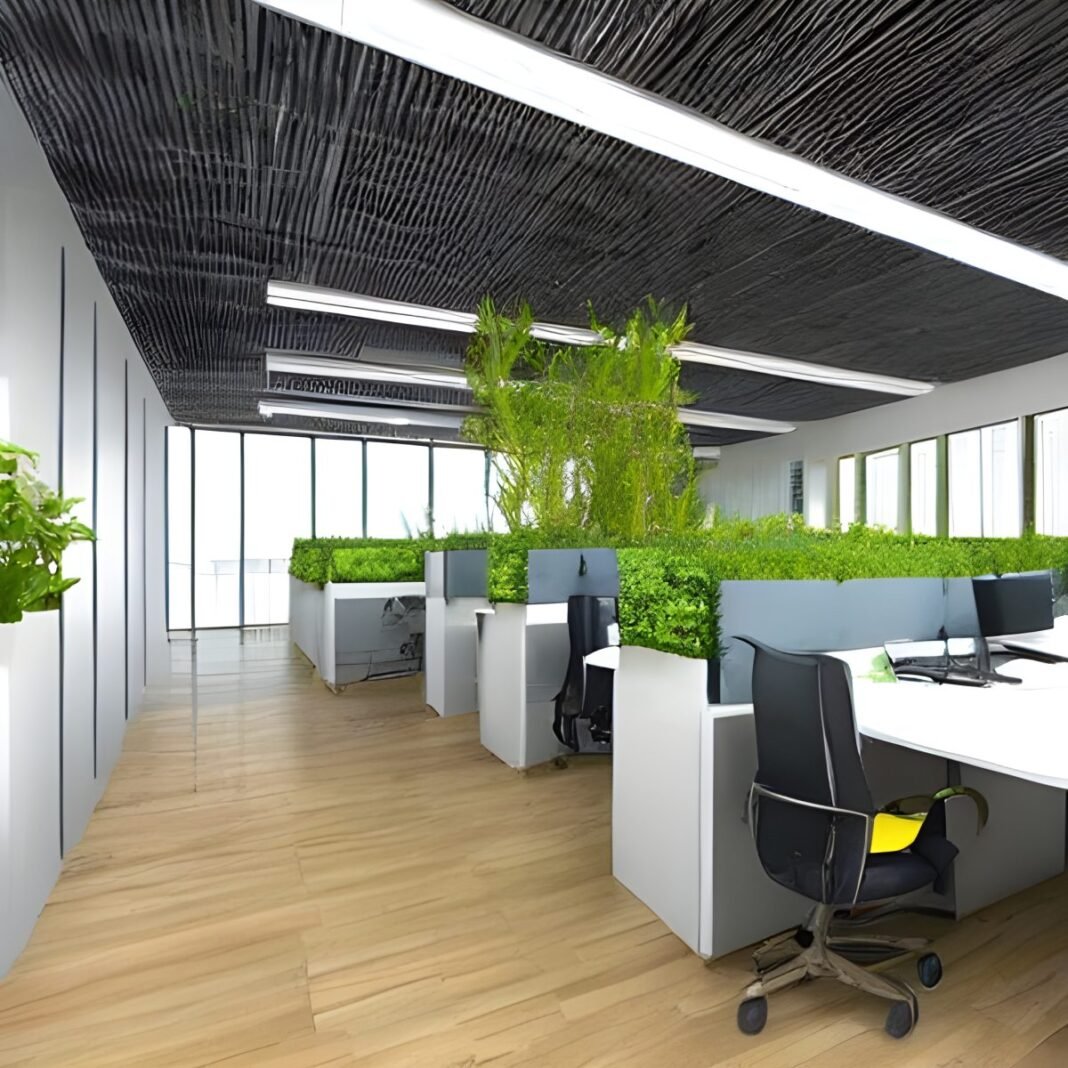In the ever-evolving landscape of contemporary workplaces, a paradigm shift towards sustainability is reshaping the way office interiors are conceived. The traditional notions of design are giving way to a new blueprint—one that prioritizes eco-friendliness and sustainability. As businesses align with the global call for environmental responsibility, the design of office spaces emerges as a critical frontier in fostering a greener and healthier work environment.
The foundation of an eco-friendly office begins with the selection of materials. From flooring to furniture, a conscious choice of sustainable, recycled, or upcycled materials plays a pivotal role. Bamboo, a rapidly renewable resource, is gaining popularity for its durability and versatility in creating furniture that exudes both style and eco-consciousness. Recycled steel, reclaimed wood, and other repurposed materials not only reduce environmental impact but also contribute to a unique and eclectic aesthetic.
Energy-efficient lighting takes center stage in sustainable office design. The shift towards LED lighting not only reduces energy consumption but also provides a conducive work environment. The integration of natural light, through strategically placed windows and skylights, not only minimizes the need for artificial lighting during daylight hours but also fosters a connection with the outdoors, promoting employee well-being.
The concept of “green walls” or vertical gardens is transforming office interiors into lush, oxygen-producing havens. These living walls not only enhance aesthetic appeal but also contribute to improved air quality by filtering out pollutants. Integrating nature into the workspace not only aligns with sustainability goals but also creates a vibrant and refreshing atmosphere that enhances employee productivity and satisfaction.
Furniture design is undergoing a transformation to meet the demands of sustainable office interiors. The trend leans towards modular and multifunctional furniture that adapts to changing needs, minimizing waste and maximizing utility. Additionally, opting for furniture crafted from responsibly sourced materials and produced using eco-friendly manufacturing processes contributes to the overall green ethos.
Waste reduction takes precedence in the eco-friendly office paradigm. Implementing a comprehensive recycling program and providing dedicated spaces for waste segregation encourages employees to actively participate in sustainable practices. From paperless initiatives to reusable office supplies, every step towards waste reduction contributes to a workplace culture that prioritizes environmental stewardship.
Incorporating energy-efficient heating, ventilation, and air conditioning (HVAC) systems is a cornerstone of sustainable office interiors. Smart HVAC technologies that optimize energy usage based on occupancy and real-time needs contribute not only to energy conservation but also to substantial cost savings for businesses. Additionally, exploring passive design strategies, such as natural ventilation and thermal mass, further reduces the carbon footprint of office spaces.
The integration of sustainable practices extends beyond the physical infrastructure to include employee wellness initiatives. Providing dedicated spaces for physical activity, incorporating biophilic design elements, and promoting a culture of health and well-being contribute to a holistic approach to sustainability. A healthy and content workforce is not only more productive but also aligns with the overarching goal of creating eco-friendly workspaces.
In the era of remote work, the concept of the “green home office” is gaining prominence. As employees embrace hybrid work models, designing home offices with eco-friendly principles becomes crucial. From energy-efficient appliances to sustainable furniture choices, extending the principles of eco-consciousness beyond the office walls contributes to a collective effort towards a sustainable future.
Achieving eco-friendly office interiors isn’t just about embracing green materials and energy-efficient technologies; it’s also about fostering a culture of sustainability among employees. Establishing clear guidelines for resource usage and encouraging responsible practices, such as reducing paper waste and promoting energy conservation, creates a collective sense of environmental responsibility.
The layout and spatial organization of eco-friendly offices are designed with employee well-being in mind. Incorporating dedicated spaces for relaxation, mindfulness, and social interactions enhances the overall work experience. Green breakout areas and communal spaces contribute to a positive and collaborative atmosphere, fostering a sense of community among employees.
The use of technology plays a crucial role in sustainable office design. Implementing smart building systems that monitor and optimize energy consumption, along with automated controls for lighting and climate, ensures that resources are utilized efficiently. Moreover, the integration of IoT (Internet of Things) devices allows for real-time monitoring and adjustments, contributing to a more responsive and eco-conscious workplace.
The concept of “cradle-to-cradle” design is gaining prominence in the creation of sustainable workspaces. This approach focuses on the entire lifecycle of products, ensuring that materials are recyclable or biodegradable, and that the production processes have minimal environmental impact. Embracing circular economy principles in office design aligns with the broader goal of minimizing waste and promoting a regenerative approach to resource use.
Eco-friendly office interiors also consider the carbon footprint associated with daily operations. Implementing initiatives like telecommuting, flexible work hours, and virtual meetings contribute not only to a reduction in commuting-related emissions but also to a better work-life balance for employees. Businesses adopting these practices not only demonstrate environmental responsibility but also position themselves as attractive employers in a world increasingly conscious of sustainable practices.
The role of leadership in championing sustainability cannot be overstated. Executives and decision-makers setting an example by embracing eco-friendly practices in their own workspaces send a powerful message throughout the organization. From utilizing recycled and recyclable materials in executive offices to actively participating in sustainability initiatives, leaders play a pivotal role in creating a corporate culture that values environmental consciousness.

